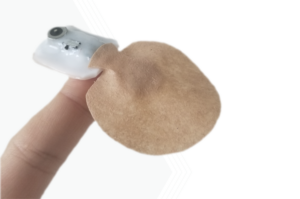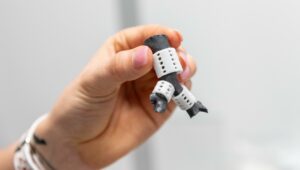Medical technology innovation and critical supporting service providers are not only working through pent up demand for delayed projects from 2020 and 2021, but also striving to advance technologies that reduce cost and improve patient outcomes developed much more recently. The U.S. FDA is striving to support innovation with new programs and guidelines that improve communication channels with medtech innovators and respond to new safety needs created by technologies like artificial intelligence (AI) entering the continuum of care. And more medtech innovators are wisely examining feasibility and market potential more carefully and earlier in their design, development and ‘de-risking’ activities.
In more detail, what is the current state of medtech innovation? GCMI Medical Director Dr. Emily Blum and Interim Director of Research and Development Engineering, Saylan Lukas share their perspectives and insights here.
By: Dr. Emily Blum and Saylan Lukas
The Hot Tech
It seems like every new medical technology incorporates miniature sensors in its design, such as accelerometers, which are capable of externally sensing and ‘distributing’ vital signs or other data points of interest including breathing sounds, EKG signals or glucose levels, to name just a few. The FDA recently approved Senseonics’ Eversense E3 continuous glucose monitoring (CGM) system for periods of up to six months and Abott’s FreeStyle Libre 3 for 14 days, both of which are continuous glucose monitors that transmits data to a smart phone app, eliminating the need for intermittent scanning by the patient or user.
 In the near future, sensors and associated software, including AI, will be able to tell us more about what’s going on with our bodies than many ever dreamed possible. What does our sweat composition tell us about hydration? What impact does the food we consume, or drugs we’ve been prescribed, have on our physiology, our health and health outcomes? Myriad new technologies are currently in development to answer questions that can shift the course of our lives for the better, and may well contribute to a shift in the way healthcare is delivered in a significant way.
In the near future, sensors and associated software, including AI, will be able to tell us more about what’s going on with our bodies than many ever dreamed possible. What does our sweat composition tell us about hydration? What impact does the food we consume, or drugs we’ve been prescribed, have on our physiology, our health and health outcomes? Myriad new technologies are currently in development to answer questions that can shift the course of our lives for the better, and may well contribute to a shift in the way healthcare is delivered in a significant way.
Everyone wants to gather as much data as possible to make well informed treatment decisions for patients. It’s a quite accessible personalized medicine opportunity, especially as artificial intelligence (AI) and machine learning (ML) couple on to that data to identify patterns for actionable insights, diagnosis, and advanced analysis. Remote monitoring of EKGs are becoming quite common in practice, and are now using AI for analysis of those data for pattern recognition capable of early detection or prevention of adverse effects with acute potential.
What’s critical for new technologies currently in development that lean on AI, is to ensure collection of clean, correct, and unbiased data, and then storing and processing it properly.
Remaining in the ‘virtual’ realm, we are seeing more and more concepts of software as a medical device, particularly when using data and AI for diagnoses.
Innovators need to understand the FDA is scrutinizing and regulating health apps based on their clinical marketing claims. This is software with high positive potential, but must still satisfy regulatory bodies on claims, risk and safety requirements, unlike software for business applications. These technologies may need more rigor in their development than innovators know, including full verification and validation to comply with regulatory standards and the technology’s claims.
The FDA has recently established Good Machine Learning Practice Standards for many of those technologies, that are not unlike Good Laboratory Practices and Good Manufacturing Practices to which innovators and their supporting partners must adhere in order to move their technology forward in the commercialization or patient care pathway or continuing freedom to operate or market a device or technology for an approved device or technology.
 Beyond sensors and connected devices, cell and gene therapies, along with 3D printed, implantable and bioresorbable devices will continue to evolve and enter patient care. One fine example is Dr. Scott Hollister’s 3D printed tracheal implant, a device GCMI assisted in making possible the first procedure of its kind in a pediatric patient in Georgia.
Beyond sensors and connected devices, cell and gene therapies, along with 3D printed, implantable and bioresorbable devices will continue to evolve and enter patient care. One fine example is Dr. Scott Hollister’s 3D printed tracheal implant, a device GCMI assisted in making possible the first procedure of its kind in a pediatric patient in Georgia.
Phase Zero, Project Feasibility Analysis in High Demand
With the bulk of our Covid-related device work complete, our Phase Zero Project Feasibility Analysis services are currently seeing higher demand. There will always be more ideas for new technologies than products ready for the next step in the design and development pathway.
This is a very good thing. Completing Phase Zero is a much smaller, though critical, hurdle in terms of time and especially treasure for innovators. It always generates eye opening insights for our customers in terms of regulatory requirements, like technologies already on the market, actual market size, verification and validation testing requirements and beyond. Innovators that connect with us sooner, and engage in Phase Zero project due-diligence, acquire information that can save six-figure or larger investments in expensive, out-of-sync activities like advanced prototyping for a saturated or IP protected technology, for example. Is the IP even available? Can you validate market size or demand? Those are just two critical questions Phase Zero answers prior to escalating investments needed for downstream design, development and commercialization activities.
The Welcome Evolution and Innovative Mindset of the U.S. FDA
A lot of innovators hear ‘U.S. FDA’ and start to shiver. They shouldn’t. The FDA is a valuable resource. We have seen that ourselves. We were initially hesitant to engage the agency directly. But we have learned that if you engage them early and present your idea, they can shape your technology and regulatory pathway with you, along with providing valuable inputs on clinical study design. In retrospect, we should have approached them much earlier and communicated much more frequently than we have done.
So stated FUSMobile Co-Founder and President Ron Aginsky is a recent interview with Southeast Life Sciences.

Dr. Emily Blum
The FDA’s nascent Total Product Lifecycle program, guidance on software as a medical device, breakthrough designations and Safer Technologies Program for Medical Devices open more frequent communication cycles and access to the experts responsible for new medical technologies’ safety and efficacy than ever before for innovators. Regulatory experts and consultants are not the only ones with access to direct regulatory insights and advice.
These are remarkable programs and assets with which innovators should engage early and often. More frequent, routine feedback from the FDA’s experts will always limit expenditures and risks a project might take heading down the wrong pathway.
Persistent “Hiccups” – Document. Everything.
The most common ‘embedded’ problem we have to unwind for our customers is documentation, or lack thereof. Even the most basic “ back of the napkin” drawings for a novel medical device contribute to a robust design history file and can be of value to regulators in understanding a device’s origins and intentions.
Rule of thumb: if it’s not documented, it doesn’t count.

Saylan Lukas
Innovators must be able to clearly define what is good, what is not good, what is acceptable, what is not acceptable and why. This includes materials and tolerances which eventually become specific and very tight respectively. And it all must be approved by other team ‘parties’ most commonly within the technology’s Quality Management System.
Risk management is also a crucial piece of the puzzle absent in potential projects brought to our team. Innovators focused highly on solutions unintentionally push risk management off the field to focus on something that simply ‘works.’ Risks associated with new medical technologies are absolutely everywhere, the most critical of which are risks of device failure, either in the hands of the clinicians before or during a procedure, or while implanted within or transmitting data following its introduction to, and active utilization by, a patient.
Risk assessments and failure mode analyses and associated testing cannot be circumvented in a novel medical device or technology’s design, development, regulatory and commercialization pathway. Risk assessments and documentation go hand-in-hand, nearly simultaneously, with design activities.
Putting together documentation from scratch, or piecing together partial work then filling in gaps is like putting toothpaste back in the tube as former GCMI Founder and CEO Tiffany Wilson has said. Document everything as it happens or evolves. Absent that, be prepared for documentation to consume a noticeable chunk of time and treasure required to give the project a reasonable footing for continuing development.
Remember This
- Document everything, no matter how, where or how seemingly insignificant
- Develop at least a basic understanding of the medical device or technology development process
- It is nearly impossible to overestimate the amount of time and money needed to successfully design, develop and commercialize a new medical device or technology, especially if a clinical trial is mandated by regulatory bodies. We find innovators underestimate costs by 2-3X for most milestone related activities. What they think is a $250,000 investment for design and development activities to achieve the next milestone can easily approach $1 million.
- Internal Review Boards do not move quickly. Their review and approval when required will take longer than anticipated.
- When clinical trials are required, enrollment and retention for successful completion are long, hard, expensive roads.
It’s Never Too Early to Get in Touch
If you are a medtech or life science innovator, be that a university based investigator or engineer, individual, startup, growth stage or large enterprise with an idea for a new device, if you work for a medical technology company or drug maker gauging a product’s readiness for preclinical studies, or if you need the very best in medical device and bioskills training, contact GCMI today.
Our facilities, tools and team serves as a one stop shop for medical technology innovation at any point in a product’s pathway to FDA approval and patient care.
Stay up-to-date on our latest news and events by following us on Twitter and LinkedIn!
